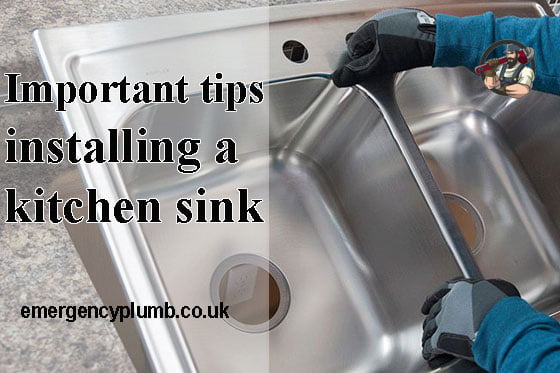This article will take you through the process of replacing your kitchen sink, step by step. Whether you’re a DIY enthusiast or a novice homemaker, this guide will make it easy for you to install a new sink yourself.
Bullet point summary of most important things to remember:
- Turn off the water supply to the sink before you start.
- Remove the old sink carefully, taking care not to damage the countertop.
- Measure the new sink to make sure it will fit in the opening.
- Apply plumber’s putty around the edge of the sink.
- Fasten the sink to the countertop using the appropriate clips or brackets.
- Connect the plumbing to the sink, using the appropriate fittings.
- Install the faucet and drain strainer.
- Turn on the water supply and test the sink for pipe leaks.
- Clean up the area when you are finished.
Remove the old sink
What you need to do:
-
Turn off the water supply to the sink.
-
Disconnect the hot and cold water lines from the sink.
-
Disconnect the drain line from the sink.
-
Remove the old sink from the countertop.
-
If the sink is undermounted, you will need to remove the clips or brackets that secure it to the countertop.
-
If the sink is drop-in, you may need to use a jigsaw to cut it out of the countertop.
How to do it:
-
Turn off the shut-off valves under the sink.
-
Use a wrench to disconnect the hot and cold water lines from the sink.
-
Loosen the nut at the bottom of the drain line and pull the drain line out of the sink.
-
If the sink is undermounted, use a wrench to loosen the clips or brackets.
-
If the sink is drop-in, use a jigsaw to cut it out of the countertop.
-
Carefully lift the sink out of the countertop and set it aside.
Tips:
-
Wear gloves to protect your hands from sharp edges.
-
Use a bucket to catch any water that leaks out of the sink.
-
If the sink is heavy, you may need help to remove it.
-
If you are unsure about how to remove the old sink, you can always hire a plumber to do it for you.
Fit the new sink
What you need to do:
-
Measure the opening in the countertop to make sure the new sink will fit.
-
If the sink is undermounted, you will need to drill holes in the countertop for the clips or brackets.
-
Apply plumber’s putty around the edge of the sink.
-
Carefully lower the sink into the opening in the countertop.
-
Secure the sink to the countertop using the appropriate clips or brackets.
-
If the sink is undermounted, tighten the clips or brackets until the sink is secure.
How to do it:
-
Measure the opening in the countertop and compare it to the measurements of the new sink.
-
If the opening is too small, you may need to resize it.
-
If the opening is too large, you may need to shim the sink to make it fit.
-
Apply plumber’s putty around the edge of the sink.
-
Carefully lift the sink and lower it into the opening in the countertop.
-
If the sink is undermounted, use a wrench to tighten the clips or brackets until the sink is secure.
Tips:
-
Take your time and make sure the sink is level.
-
If the sink is not level, it will not drain properly.
-
Use plumber’s putty to seal the gap between the sink and the countertop.
-
This will help to prevent leaks.
Connect the plumbing
What you need to do:
-
Connect the hot and cold water lines to the new sink.
-
Connect the drain line to the new sink.
-
Attach the dishwasher hose to the new sink.
How to do it:
-
Connect the hot and cold water lines to the new sink using the appropriate fittings.
-
Connect the drain line to the new sink using the slip nut and washer.
-
Attach the dishwasher hose to the new sink using a hose clamp.
Tips:
-
Use a wrench to tighten the fittings securely.
-
Make sure that all of the connections are watertight.
-
Use plumber’s tape to seal the threads on the fittings.
-
If you are unsure about how to connect the plumbing, you can always hire a plumber to do it for you.
Install the faucet and drain strainer
What you need to do:
-
Install the faucet.
-
Install the drain strainer.
How to do it:
-
Install the faucet following the manufacturer’s instructions.
-
Install the drain strainer by screwing it into the drain hole in the sink.
Tips:
-
Make sure that the faucet is tightened securely so that it does not leak.
-
Make sure that the drain strainer is not too tight or too loose. If it is too tight, it will be difficult to open and close. If it is too loose, it will not catch food scraps and debris.
Test the sink
What you need to do:
-
Turn on the water supply to the sink.
-
Check for pipe leaks around the sink, faucet, and drain strainer.
-
Flush the sink with water to make sure that the plumbing is working properly.
How to do it:
-
Turn on the shut-off valves under the sink.
-
Open the hot and cold faucets and check for leaks around the faucets and the sink.
-
Open the drain and check for leaks around the drain strainer.
-
Flush the sink with water to make sure that the plumbing is working properly.
Tips:
-
If you find any leaks, turn off the water supply and tighten the connections.
-
If you are still unable to stop the leaks, you can always hire a plumber to fix them for you.
Clean up
What you need to do:
-
Clean up the area around the sink.
-
Dispose of any old plumbing parts or debris.
How to do it:
-
Wipe up any spills or splashes.
-
Remove any old caulk or sealant from the countertop.
-
Wipe up any dirt or grime from the sink and countertop.
-
Dispose of any old plumbing parts or debris in the appropriate recycling or trash cans.
Tips:
-
Use a cleaning solution that is safe for your countertops.
-
Be careful not to scratch the countertops or sink.
-
If you are unsure about how to clean up the area, you can always hire a professional cleaning service.
Your burning questions :
Can I install a kitchen sink myself?
Yes, it is entirely possible to install a kitchen sink yourself, provided you have the appropriate tools and a basic understanding of plumbing. However, if you’re not comfortable with DIY projects or lack plumbing experience, it’s advised to hire a professional. Always remember, incorrect installation can lead to leaks and water damage.
Do you need a plumber to fit a kitchen sink?
While it’s possible for a skilled DIY enthusiast to fit a kitchen sink, hiring a professional plumber is highly recommended. Plumbers have the necessary skills and tools to ensure a proper and secure installation. Furthermore, they can troubleshoot any potential issues and ensure the work complies with local plumbing codes.
Does silicone hold sink in place?
Yes, silicone is often used to hold a sink in place. Primarily, it serves as a waterproof sealant with adhesive properties, preventing any leakage around the sink area. It is applied between the sink and the countertop to ensure a tight, secure fit, thereby adding stability to the installed sink.
What can I use to secure my sink to my countertop?
You can use a variety of tools to secure your sink to your countertop. The most common method is by using sink clips or mounting brackets, which come with most sinks. However, you can also use a silicone adhesive or caulk, along with plumber’s putty, to ensure a secure, immovable, and watertight fit.
What is the easiest kitchen sink to install?
The easiest kitchen sink to install is the drop-in or top-mount sink. This type of sink simply ‘drops-in’ to a hole cut out in the countertop and is sealed around the edges. No special mounting is required as the weight of the sink, along with the sealant, holds it in place.


